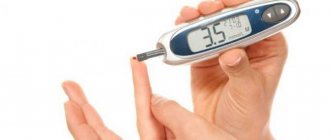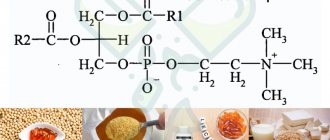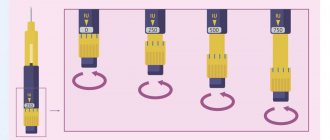January 26, 2021
A long-time smoker can smoke 40-45 cigarettes a day. Of course, such an amount of nicotine and tar entering the body every day cannot but affect health. However, it is extremely difficult to say goodbye to a negative habit. Firstly, cigarettes become part of all daily rituals. They fit into life so “organically” that they are associated with rest, relaxation, respite, and also “help” in moments of nervous tension. Secondly, the body itself begins to consider the incoming substances as something important, and includes nicotine in metabolic processes. That’s why it’s so difficult to get rid of a bad habit, because you need to convince yourself, but the body will “demand.”
It is not surprising that many long-term smokers try to follow the “gradual withdrawal” method, simply reducing the number of cigarettes they smoke daily. In practice, this method does not allow you to completely quit smoking. The harm can be reduced, but only slightly. You can get rid of potential or existing health problems only after completely quitting smoking.
However, many are afraid to suddenly quit smoking. Although a smoker with 20 years of experience may still be a very young man, 35-40 years old, and his body will be able to fully recover even after such “pollution.” However, many people are interested in what happens if you quit smoking abruptly? Smokers are afraid of mood swings, arrhythmias and heart rhythm disturbances, excess weight gain, and so on. Let's figure out whether it is really dangerous to suddenly quit smoking and whether the human body can react negatively to quitting cigarettes?
Is it worth quitting smoking after 20-30 years of smoking?
If an experienced smoker wants to quit smoking, but doubts his own self-control, he may convince himself that quitting abruptly is dangerous. In fact, there are no studies that suggest that continuing to smoke is safer than quitting.
If you are wondering whether you should quit smoking after 40, then the answer from doctors will be unequivocal - yes! Continuing to smoke 5, 10, 20 cigarettes or more every day, a person destroys his body. The emergence of chronic or even incurable diseases in this case is a matter of time.
But the main question remains - how to quit smoking with a long history of smoking? Some lucky people have such a strong gift of self-persuasion that they can simply put down their cigarettes and never touch them again. However, there are only a few of them. Most people may need the help of a drug addiction specialist, and this is absolutely normal.
Nicorette®
The pharmacokinetics of nicotine have been extensively studied; it was found that the method of delivery of the substance to the body has a significant impact on the rate and extent of absorption.
The pharmacokinetics of the topical spray were studied in four studies involving 141 subjects.
Suction
The topical dosage form of Sirey assumes that the dose of nicotine is delivered immediately and, as a result, its absorption from the oral cavity is rapid: according to studies, the absorption of nicotine from a topical spray occurred after 2 minutes (at the first time point).
The maximum concentration of 5.3 ng/ml is achieved within 13 minutes after administration of 2 mg of nicotine. 10 minutes after application of the 1 and 2 mg spray, the area under the concentration-time curve (AUC) exceeded those obtained in studies of chewing gum and tablets containing 4 mg of nicotine (0.48 and 0.64 hig/ml compared to 0.33 and 0.33 hhig/ml). AUG values indicate that the bioavailability of nicotine when using a spray is slightly higher than when using nicotine chewing gum or tablets. The AUC for the 2 mg spray was 14.0 hig/ml compared to 23.0 hig/ml for the 4 mg chewable gummies and 26.7 hig/ml for the 4 mg tablets.
The mean steady-state plasma nicotine concentration achieved after administration of the maximum dose (i.e., 2 sprays of 1 mg spray every 30 minutes) was approximately 28.8 ng/ml compared to 23.3 ng/ml with chewable nicotine. gum with a dosage of 4 mg (1 tablet every hour) and 25.5 g/ml for nicotine tablets with a dosage of 4 mg (1 tablet every hour).
Given the rapid absorption and similar high relative bioavailability, most of the nicotine released from the spray is apparently absorbed through the buccal mucosa.
Distribution
The volume of distribution after intravenous administration of nicotine ranges from 2-3 l/kg.
The binding of nicotine to blood plasma proteins is less than 5%. For this reason, changes in nicotine binding when using concomitant drugs or changes in plasma protein levels in a number of diseases should presumably not have a significant effect on the pharmacokinetics of nicotine.
Biotransformation
The metabolism and elimination of nicotine do not depend on the dosage form, so the results of studies of nicotine administered intravenously are suitable for their description.
The main organ that eliminates nicotine is the liver. However, nicotine is also metabolized in the kidneys and lungs. More than 20 nicotine metabolites are known, all of which appear to be less active than the parent compound.
The plasma half-life of the main metabolite of nicotine, cotipin, is 15-20 hours, and its concentration is 10 times higher than that of nicotine.
Removal
The average plasma clearance of nicotine is 70 l/hour, the elimination period is 2-3 hours.
The main nicotine metabolites found in urine are cotinine (12% of the administered dose) and trans-3-hydroxycotinine (37% of the administered dose). Approximately 10% of nicotine is excreted unchanged in the urine. At high filtration rates and urine pH below 5, up to 30% of unchanged nicotine can be excreted in the urine.
Linearity/non-linearity
With 1, 2, 3 and 4 sprays of the 1 mg/dose spray, only a slight deviation from the linearity of AUC and Cmax was detected.
Special patient groups
Renal dysfunction
The progression of renal failure is accompanied by a decrease in the overall clearance of nicotine. Nicotine clearance in patients with severe renal impairment is reduced by an average of 50%. In hemodialysis patients, an increase in nicotine concentration was observed.
Liver dysfunction
The pharmacokinetics of nicotine in patients with mild liver dysfunction (5 points on the Child-New scale) did not change, but in the presence of moderate liver dysfunction (7 points on the Child-New scale) it decreased by 40-50%. There are no data on the pharmacokinetics of nicotine in liver dysfunction of more than 7 points on the Child-Pugh scale.
Elderly patients
In healthy elderly patients, a slight decrease in the total clearance of nicotine was noted, which did not require a change in the dose of the drug.
What happens to the body after quitting smoking
Quitting smoking will happen easily if a person is already psychologically determined to quit, if he has convinced himself that without cigarettes his life will become better and healthier. This is more of a psychological factor than any disorder in the nervous system.
It is often advised to switch to caramel, nuts or seeds. There is quite a serious danger here. Firstly, instead of one bad habit, you can acquire another one associated with an eating disorder. Secondly, it is precisely because of such “substitutes” that people gain weight when they quit smoking. For example, if instead of 40 cigarettes a day you eat 40 sweets, then this will be about 2000 “extra” kcal, which will immediately affect your figure.
If you suddenly quit smoking after a long history of smoking, your health will gradually improve. Specialists who return people with addictions to normal life are guided by statistics: almost 5 million people die every year from the consequences of smoking. At the same time, no one has yet died from trying to quit cigarettes.
Reviews from doctors
Doctors also became interested in a new product that makes it easy to quit addiction by smoking a pack of cigarettes a day. Chewing gum, in their opinion, really has an effect and helps reduce the craving for smoking, but to achieve results it is necessary to undergo an individual examination.
Alexander, psychotherapist:
I believe that the new development really helps to quit smoking. Many of my patients came with complaints of severe addiction to nicotine, but after the prescribed course of treatment, the desire disappeared. Of course, to achieve your goal you must not only use Nicorette, but also have willpower.
Sergey, therapist:
Nicorette chewing gum cannot have a positive effect on the patient's body. Modern drugs have many side effects and do not lead to treatment. The use of chewing gum leads to the patient acquiring a new addiction, only this time he needs chewing gum to satisfy his nicotine addiction.
NICORETTE (chewing gum)
today, and today I’ll smoke again, and so on.
Once I heard that I easily quit smoking around Easter and I was waiting for this day. And when it came, I learned that this was not true and on a sacred holiday it is just as difficult to give up the habit as on any other day. In general, I have been walking toward the day of quitting smoking for a long time, with weak, uncertain steps. Before going to bed, I made a firm decision, “not a single cigarette tomorrow,” and the morning began with “smoking.” I read a lot of reviews and based on them I decided to try to calm the riot of my body with the help of Nicorette chewing gum. It seems like nothing complicated, you chew gum and forget about smoking. *Object of review*
So, Nicorette chewing gum is packed in a box. The colors on the box don’t seem dull, but they don’t catch the eye either.
On the reverse side there is information about the composition and manufacturer. It turns out that the drug is produced in Sweden.
I opened the box as best I could, and it turns out there was a marked place for opening. I only discovered it now when I was preparing a review.
Inside there are two blisters with chewing gum, 15 pieces each.
You can leave one blister at home and carry the other with you. It is very comfortable.
Chewing gums are square-shaped pads, about 15mm on a side, slightly convex on both sides.
Here and there there are irregularities, which the manufacturer warns about in the instructions as a normal phenomenon.
Also, when removing the pads from the blister, you can easily damage their shell; it will crack, since the elastic is quite soft.
These pads have a yellow-green tint, which becomes more saturated yellow when chewed.
The taste is pleasant, but for me it is too sweet, I would even say cloying, a little minty and reminiscent of the usual Orbit. Sweet mint." The only difference from regular chewing gum is a slight bitterness and a slight burning sensation in the throat.
In principle, you can chew it, it’s not disgusting.
Nicorette chewing gums vary in nicotine content.
According to the instructions, I should buy 2 mg gum. But having considered the reviews in which many write that 2 mg chewing gum does not cope with its task, but 4 mg really helps, I decided not to risk it and took 4 mg. Interestingly, the same 30 gummies of 2 mg are more expensive than 4 mg. Apparently, following the same classification, they still buy more often.
Since quitting smoking is accompanied by many consequences called Nicorette syndrome?
The instructions provide a separate paragraph for future and current mothers who have decided to quit smoking and use Nicorette to alleviate their already unstable condition.
Like any drug, which is Nicorette, gum has the risk of rewarding you with side effects:
It would seem that it could be easier than chewing gum. But there are some nuances here:
Firstly, I get a slight burning sensation when the gum is between my gum and cheek. And secondly, while you are concentrating on chewing and moving the gum around in your mouth, you simply get distracted and forget that you wanted to smoke. This is exactly what happens to me. I specifically checked it and, after chewing the gum for quite a long time, I went and calmly smoked, without experiencing nausea and reluctance to smoke, as was the case with Tabex. That is, my body did not receive the desired dose of nicotine at all.
In my opinion, chewing gum works on distraction and self-hypnosis, a sort of placebo effect.
*Result*
Since I did not find a pronounced effect, I decided not to use this chewing gum at all. Since I can endure up to half an hour, waiting for the effect of chewing Nicorette gum, then I can endure without it, and I can also be distracted. So why experience bitterness in your throat and a burning sensation in your cheek. The instructions say that chewing gum causes less harm than smoking, but it still exists. For me, this chewing gum turned out to be absolutely useless. And it’s worth noting that recently I’ve been smoking less than usual. This is not what I expected, oh, this is not what I expected. Now I practically don't smoke. But so far I haven’t been able to give up morning and evening cigarettes. But it's a matter of time. And I did this without the help of Nicorette chewing gum. Every time I want to smoke, I remember chewing gum, I think whether to chew it or not, I come to the conclusion that there is no difference, with or without chewing gum, I still have to gather my willpower and endure. So I can handle it myself.
*Conclusion*
I came to the conclusion that you can quit smoking without any drugs. The most important thing is to make a firm decision. And for this you need an incentive. For some reason, maintaining one’s health is not an incentive for many. For me, my growing children became an incentive. Even though I didn’t smoke in front of them, I’m still ashamed that I’m doing it, risking my health, without thinking that even if I don’t give a damn about myself (otherwise I wouldn’t smoke at all), my children need me. I’m ashamed to admit that I have this problem and please don’t judge me, I judged myself a long time ago. But I'm on the way to fixing it and I will do it. Be healthy! And remember, everything is in your hands.
How does cigarette addiction manifest?
According to the International Classification of Diseases (ICD-10), the criteria for nicotine dependence include the presence of 3 or more of the following symptoms that have been observed over the past 12 months13:
- constant desire to smoke;
- attempts to reduce the number of cigarettes smoked or control tobacco use that have been unsuccessful;
- tolerance to nicotine, which is manifested, on the one hand, by an insufficient effect when using the same amount of nicotine, and on the other, by the absence of typical signs of an overdose (nausea and dizziness do not occur, despite the use of high doses);
- spending a lot of time on purchasing tobacco products, sometimes due to smoking a person’s professional and social activities suffer, as well as his recreational activities;
- use of nicotine despite symptoms that are believed to have appeared or become more severe due to smoking.
How to get rid of nicotine addiction
The main problem on the way to life without cigarettes is withdrawal syndrome7. Its manifestations can be so painful that they often lead to relapses and resumption of smoking (relapse1).
Different types of therapies can be used to treat nicotine addiction. Among them are 5:
- Behavioral - involves the fight against bad habits and the formation of new useful skills.
- Medication - indicated for all smokers with moderate to severe tobacco dependence. Its goal is to alleviate the symptoms of withdrawal syndrome that develop as a result of quitting smoking, as well as to prevent relapses and a return to smoking.
As a rule, experts recommend combining these methods, however, behavioral and pharmacological therapy can be prescribed separately. The approach is determined taking into account the severity of tobacco addiction14:
- People who score 6 or more points on the Fagerström test are recommended to use pharmacotherapy.
- If the degree of addiction is assessed at 8 points or higher, a combination of behavioral and drug therapy is prescribed.
Some medications that help cope with nicotine addiction can also be used by people with a low degree of addiction. In any case, an individual approach and consultation with a specialist are required to determine the treatment regimen and dosage of drugs14.
During drug treatment, the doctor may prescribe nicotine-containing drugs that reduce the symptoms of nicotine addiction, such as Nicorette®3,5.









